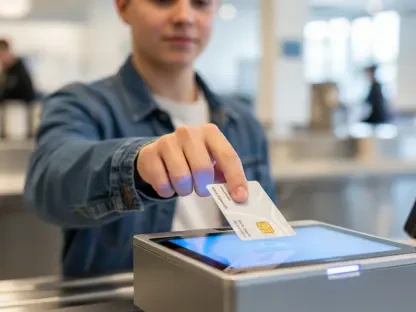In a world where digital transactions are commonplace and cyber threats are increasingly sophisticated, traditional methods of authentication like SMS and email-based one-time passwords (OTPs) are being reconsidered, if not outright abandoned. These methods, once seen as the cutting edge of digital security, are now criticized for vulnerabilities such as phishing and SIM swapping. Across the globe, nations are making significant shifts towards stronger, more secure authentication methods, such as app-based and biometric systems. These changes are not just evolutionary steps but a strategic pivot driven by the need to safeguard users’ financial assets and personal data. To this end, several countries have begun implementing frameworks to phase out traditional OTPs, reflecting a broader consensus on the necessity for robust digital banking security. This approach underscores a global commitment to countering the rising tide of cybercrime with enhanced measures.
Regional Trends in Authentication Transition
In the United Arab Emirates, the move towards enhanced verification processes has been mandated by the UAE Central Bank, with banks instructed to cease the use of SMS and email OTPs in favor of app-based systems by March 2026. This development is central to the UAE’s strategy to protect consumers from financial fraud. App-based authentication, incorporating multi-factor verification, is seen as a powerful deterrent against cyber fraud. By integrating these technologies, banks aim to diminish risks associated with impersonation and unauthorized access. Singapore, too, has embraced this transformation. The Monetary Authority of Singapore announced in 2024 its plans for phasing out traditional OTPs, urging the adoption of secure digital tokens. This initiative highlights Singapore’s proactive stance on cybersecurity, aligning with its broader efforts to safeguard digital infrastructures.
Malaysia’s approach underscores the urgency in adopting app-based verification. Bank Negara Malaysia took decisive steps in 2023 by mandating the use of secure devices for transactions. This initiative responds directly to the escalating incidents of online scams, making it imperative for customers to transition to safer platforms. Similarly, the Philippines has echoed these sentiments, mandating a switch from SMS and email OTPs to biometric and device-based methods by June 2026. Such a shift not only addresses immediate security concerns but also sets a precedent for how financial institutions in the region must adapt to changing digital landscapes. Collectively, these measures represent a concerted move among nations to preemptively tackle cyber threats through technological advancement and regulatory foresight.
Progress in Other Regions
Across the Atlantic, shifts in authentication practices are also underway in countries like India and the United States. India has initiated a pivotal shift, with the Reserve Bank of India proposing a principle-based framework to depart from conventional OTP models. This forward-thinking strategy intends to bolster security measures without entirely dismissing the utility of additional verification. The specification of functional principles over rigid methods allows a degree of flexibility, fostering innovation in authentication technology while ensuring robust security. Meanwhile, in the United States, key federal agencies, including the US Patent and Trademark Office and the Financial Industry Regulatory Authority, have unveiled plans to end SMS-based verification by mid-2025. These steps mirror a significant transition towards application-based and biometric techniques.
The European Union is no exception to this emerging trend. While SMS OTPs are not explicitly prohibited, the restrictions under the Payment Services Directive 2 (PSD2) have impelled a shift towards more sophisticated security techniques. The EU Login system has incrementally integrated app-based and biometric methods since 2024, reflecting the region’s strategic response to compliance requirements and the broader imperative for secure digital identity verification. This movement within the EU further emphasizes the importance of harmonizing regional security approaches with global standards. Collectively, these trends reflect a progressive alignment with contemporary security needs, illustrating how diverse regulatory landscapes can converge towards shared goals in digital safety.
Outlook on Banking Security Evolution
In the United Arab Emirates, a crucial mandate from the UAE Central Bank is shifting banks away from SMS and email one-time passwords (OTPs) to app-based authentication systems by March 2026. This change aligns with the UAE’s strategy to safeguard consumers against financial fraud through advanced verification processes. Utilizing multi-factor authentication within apps is a powerful tool against cyber fraud, reducing risks related to impersonation and unauthorized access. Singapore has adopted a similar initiative, with the Monetary Authority of Singapore announcing in 2024 plans to phase out traditional OTPs in favor of secure digital tokens. Malaysia, facing rising online scam incidents, has mandated app-based verification through secure devices since 2023. The Philippines is on a similar path, requiring biometric or device-based verification methods by June 2026. These collective measures illustrate a regional effort to preemptively tackle cyber threats through technological innovation and regulatory foresight, ensuring consumer protection and enhancing digital security.









